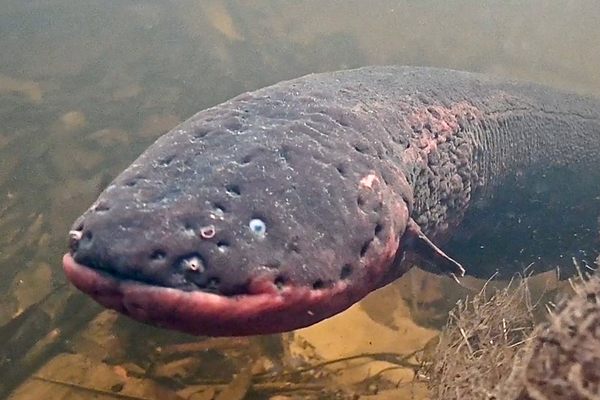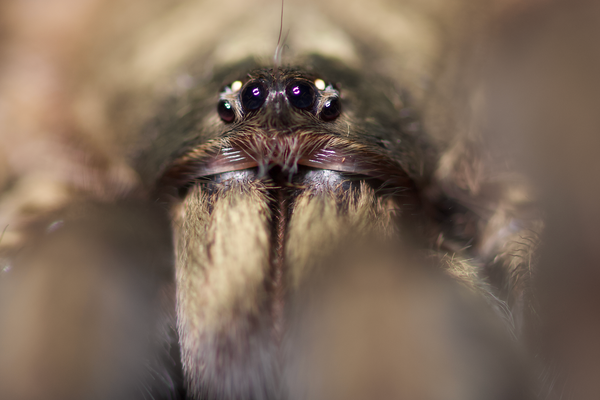Brazil’s Most Adorable Anteater May Be a New Species
These isolated, pocket-sized silky anteaters live among the mangroves of Brazil’s Atlantic coast.
This article is from Hakai Magazine, an online publication about science and society in coastal ecosystems. Read more stories like this at hakaimagazine.com.
Hiking through dense vegetation in Brazil’s Parnaíba Delta, Flávia Miranda stops suddenly and plucks a wheat-colored ball of fur from the tangle of mangrove branches. Startled from its slumber, the tennis ball-sized silky anteater raises its forepaws defensively like a boxer. Miranda, a researcher in conservation medicine at the State University of Santa Cruz in Brazil, carefully takes samples of blood and fur, then releases the elusive animal back into the forest.
Silky anteaters are the smallest anteaters and were the first to evolve, between 30 and 40 million years ago. Largely solitary and nocturnal, these fluffy little canopy dwellers inhabit low-altitude rainforests and mangroves from southern Mexico to northern Bolivia. When they’re not gorging on ants and termites, they spend much of their two-year life span sleeping.
Until recently, scientists believed that all silky anteaters belonged to the same species. But in 2017, Miranda published an analysis of silky anteater DNA from across the Americas, revealing seven distinct species.
“I always had this feeling that there was more than one species,” says Miranda, who has studied Brazil’s sloths, anteaters, and armadillos for 30 years. “I’d noticed differences in the fur color of populations in different regions.”

Now, Miranda is investigating the possibility that the sleepy animal she sampled in the Parnaíba Delta, roughly 280 kilometers (174 miles) east of São Luís, is a member of an eighth species.
The delta’s silky anteaters are isolated, living far from their nearest known kin in the Amazon Basin, to the northwest, and a swath of tropical rainforest to the southeast, along Brazil’s Atlantic coast. This population, Miranda says, may be a relic left over from 11,000 years ago, when the Amazon rainforest stretched to the Parnaíba Delta.
So far, Miranda’s genetic analysis indicates that the delta population has been diverging from other silky anteater species for roughly two million years. However, the DNA tests need to be corroborated with physical characteristics to confirm that the delta’s anteaters form a new species. That’s why Miranda and her field assistant Alexandre Martins are continuing to collect blood samples and take measurements of animals that they find in the mangroves. “At the very least, we’re certain that this population is evolutionarily distinct and in the process of becoming [a separate species],” she says.
Mariella Superina, who chairs the International Union for Conservation of Nature’s group of anteater experts, describes Miranda’s research as groundbreaking. “Silky anteaters are the most understudied of all the [sloths, anteaters, and armadillos],” she says.
The Parnaíba Delta’s dense mangroves make it almost impossible for Miranda and her colleagues to count how many delta anteaters there might be. But since Miranda first visited in 2009, it has become clear that the delta is not a safe refuge for anteaters. Local people harvest the mangroves for fencing, housing, and boats. Farmers also let their cows and pigs range freely in the delta, where the livestock overgraze and trample young trees.
In 2011, Miranda began recruiting the community to reforest the mangroves. Locals started growing propagules, or mangrove seedlings, in a nursery for replanting in the delta, and fenced these areas off from livestock. Quickly, the forest began to grow back. Although residents are mostly focused on protecting mangroves, their ongoing efforts are also benefitting the silky anteater and other wildlife.
“Our community’s survival is threatened by climate change, rising sea levels, and storms,” says Paulinho Morro do Meio, a fisherman, tour guide, and one of Miranda’s collaborators. “[The mangroves] are our best defense, and we work hard to restore them.”
For Miranda, though, the delta has sparked a bigger interest in yet-undiscovered silky anteaters, perhaps occupying the dry forests between the Parnaíba Delta and the distant rainforests. “I’ve got a feeling there are more ‘missing link’ populations,” she says.
























Follow us on Twitter to get the latest on the world's hidden wonders.
Like us on Facebook to get the latest on the world's hidden wonders.
Follow us on Twitter Like us on Facebook